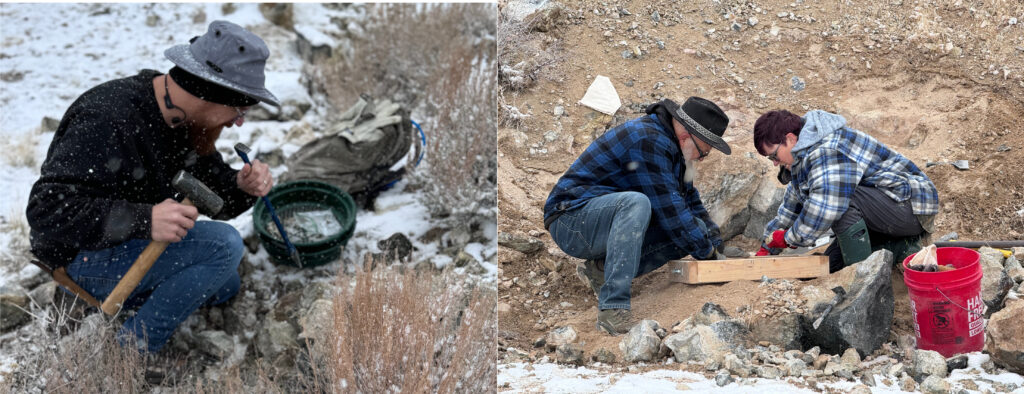
Rock Hounding: A Guide to Exploring Nature’s Treasures
What is Rock Hounding
Rock hounding—aka rock collecting or mineral collecting— is the recreational activity of searching for and collecting rocks, minerals, gemstones, and fossils from their natural environment. At its core, this hands-on activity involves exploring the outdoors to find and collect various geological specimens. It can be done on public lands, private lands (with permission), and at paid dig sites[1]. This hobby attracts enthusiasts of all age, drawn by the thrill of discovery and the beauty of nature’s hidden treasures.
It is associated with lapidary (the art and science of cutting, polishing, carving, tumbling, and cabbing stones and faceting gemstones into decorative items) and geology (
Getting Started with Rock Hounding
Research and Preparation
Before embarking on your rock hounding journey, it’s important to conduct thorough research. Identify the best rock hounding areas in your region, the types of minerals available, and any local rock and mineral clubs that can offer guidance[1]. Understanding the rules and regulations for collecting on public and private lands is also crucial[1].
Essential Gear and Equipment
To ensure a successful and safe rock hounding experience, you’ll need the right tools and equipment. Some basic items include:
- Rock hammer and chisel
- Safety goggles and gloves
- Sturdy footwear
- Backpack for carrying specimens
- Field guide for identifying rocks and minerals
- Magnifying glass or loupe for close inspection[1]
Techniques for Successful Rock Hounding
Identifying Promising Sites
Look for areas where natural erosion processes, such as riverbanks, gullies, and road cuts, continuously uncover new rocks and minerals[2]. High-energy areas, where water flow is strong, are particularly fruitful for finding interesting specimens[2].
Collecting and Handling Specimens
When collecting rocks and minerals, handle them with care to avoid damage. Use appropriate tools to extract specimens and store them safely in your backpack. It’s also important to fill any excavation holes to prevent hazards for others[3].
Ethical and Responsible Rock Hounding
Respecting the Environment
Rock hounding should be done with respect for nature and the environment. Always obtain permission before collecting on private lands and adhere to local regulations for public lands[3]. Minimize your impact by avoiding excessive digging and leaving the area as you found it.
Sharing Your Finds
Sharing your discoveries with the rock hounding community can enhance your experience and contribute to collective knowledge. Properly clean, store, and document your specimens, and consider joining local clubs or online forums to connect with fellow enthusiasts[3].
Conclusion
Rock hounding is a rewarding hobby that combines adventure, education, and a deep appreciation for nature. By following best practices and respecting the environment, you can enjoy the thrill of discovering nature’s treasures while contributing to the preservation of our geological heritage. Whether you’re searching for common stones or rare gems, rock hounding offers endless opportunities for exploration and discovery.
We hope that this AI-generated and edited document helps you get started with rock hounding!
If you have any specific questions or need further details, feel free to show up to one of our monthly meetings or contact us.
References
[1] How to Start Rockhounding: The Ultimate Beginner’s Guide
[2] Rockhounding Tips: Banks, Gullies, Road Cuts, and Hills
[3] Essential Rockhounding Best Practices for Ethical Collecting and …
